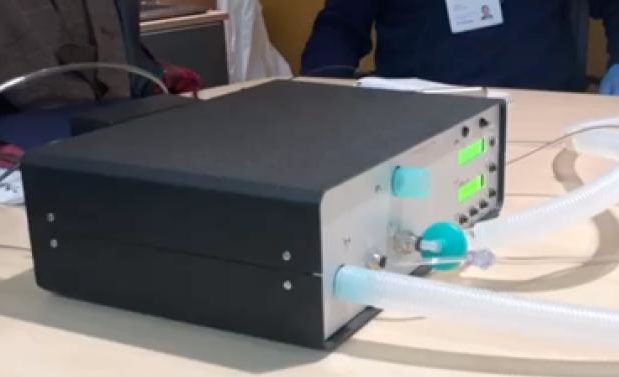SHARE
A scalable pressure ventilator for the treatment of COVID-19 patients globally
Following the progression of the COVID-19, the number of infected patients globally grows by almost 10,000 every day. Since 20% of them are hospitalized and 5% need admission in an ICU, the demand for ventilators is extremely high. No healthcare system is prepared for such high demand, so the rapid manufacturing of ventilators for hospitals everywhere is rather urgent. Current pressure ventilator models are complex and costly, and the number of manufacturers is limited. Therefore, it is not possible to supply the needed amount in the short-term.
Multiple initiatives have been kicked off globally as an attempt to solve this challenge. Their common goal is, within their reach, to come up with a complete or partial ventilation solution that may help.
First steps: Selecting one ventilation system
Ennomotive decided to launch a challenge for its more than 20,000 engineers to effectively find the best possible solution regarding time, efficiency, availability, and cost. 101 participants joined the challenge and after only 7 days, 45 solutions were submitted. The participants themselves peer-reviewed and evaluated them Finally, the selected solution in Round 1 proposes a ventilation system based on the classic ventilators from the past. Frede Jensen, the British engineers who submitted it, kept it simple by eliminating any dispensable and expensive component that made the design complex to operate. Simpler Pressure Control ventilators of the past have delivered, and are still delivering, a valuable level of therapy, controlling the volume through blood pressure and oxygen saturation. Once the healthcare system is forced to turn warehouses into makeshift intensive care wards, as the images from Italy, each ward will have hundreds of patients, tightly organized, a rudimentary infrastructure, and healthcare staff with below-average respiratory care skills, and very tired/overworked. This is not a realistic environment for an advanced skill and infrastructure-demanding ICU mechanical ventilator or a single limb homecare ventilator, which exhausts contaminants into the ambient environment. For this reason, we believe that Pressure Control ventilation can offer a better match for the conditions in the makeshift ward.Description of the solution: Pressure ventilator
The selected ventilator was developed by Frede Jensen and is based on pressure control, similar to the ones used in the ’90s. It has basic ventilation functions, more than enough to treat COVID-19 patients in the current situation. Its strengths are the following:- It is globally scalable since its components are available in the market. Besides, this solution is pretty unique and different from what everybody else is looking for in a ventilator.
- Easy to use, especially important for underqualified clinical staff in countries with large numbers of patients and fewer resources and infrastructure.
